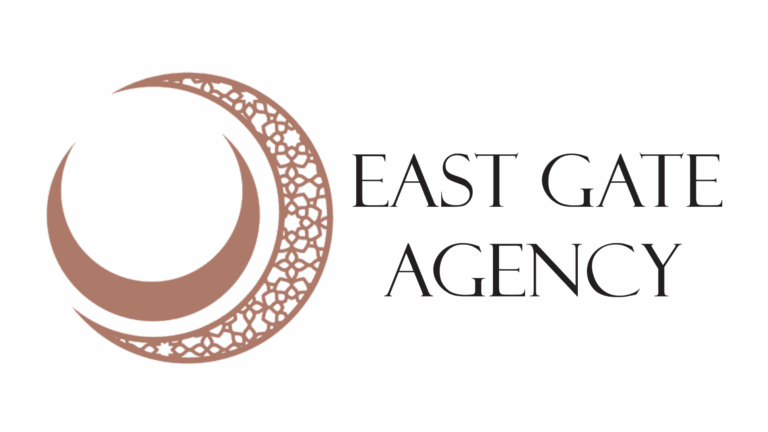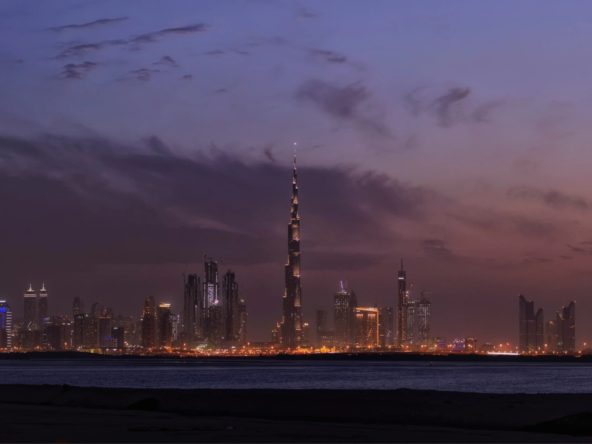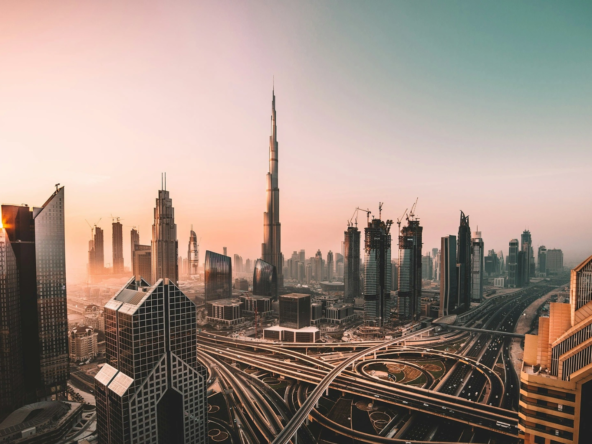A Guide Beyond the Hype
The Mirage of ‘Best’
Ask anyone, “Where’s the best place to buy property in Dubai?” and you’ll likely get ten different answers—each one based on preference, hearsay, or a recent success story. But here’s the truth: there is no one-size-fits-all “best” area. The right place to invest depends on your goals: Are you looking for capital appreciation? Rental income? A place to live in the future? A short-term flip or long-term asset?
At East Gate Agency, we believe that real estate isn’t about finding the loudest trend or copying someone else’s win. It’s about making well-informed, tailored decisions that align with your personal or portfolio strategy. And that starts by understanding a core truth: if a property is unusually cheap without any discount campaign, it’s probably cheap for a reason. The build quality, the size of the apartment, the number of amenities, or even the location could be a major red flag. On the other end, a high price tag doesn’t automatically guarantee long-term value—sometimes it just means you’re paying a premium for branding, not return.
This blog isn’t about creating hype. It’s about showing you how to identify value, avoid common mistakes, and focus your 2025 investment decisions on logic, data, and purpose.
Dubai’s Market in 2025: What Has Changed?
Dubai’s real estate landscape in 2025 is more mature, more dynamic, and more competitive than ever before. Over the past few years, the city has undergone a fundamental shift in how property is bought, sold, and used. It’s no longer a market dominated by speculative buying and overnight flips. Instead, it’s evolving into a stable and investor-friendly environment with long-term value creation at its core.
The introduction of long-term Golden Visas has brought in a wave of new residents, many of whom are high-income professionals or business owners looking to settle permanently. This demographic shift has increased demand for quality housing in well-connected, livable communities. At the same time, Dubai has heavily invested in infrastructure: new metro lines are expanding, suburban districts are being linked to business hubs, and retail, education, and healthcare facilities are being built ahead of demand.
What does this mean for investors? It means the rules of the game have changed. You can no longer rely on outdated maps or old assumptions. Areas that were overlooked just two years ago are now emerging as smart bets. Meanwhile, former hot zones may be cooling due to oversupply or a lack of livability. (Understanding this shift is crucial if you want your 2025 investment to succeed.)
The Big Trap: Why ‘Cheap’ and ‘Expensive’ Are Misleading Labels
“It’s Cheap for a Reason”
One of the most common mistakes new investors make is assuming that a low price means they’ve found a hidden gem. But in Dubai, as in most maturing markets, low price often signals hidden compromises. Micro-sized studios, for example, may look appealing on paper due to their seemingly high rental yields, but in reality, they often suffer from high turnover, low tenant satisfaction, and resale difficulties. These units also tend to attract short-term renters, which leads to inconsistent income and higher maintenance costs.
In many cases, the low price is a result of poor construction standards, unattractive layouts, or subpar developer reputations. Some projects may look great in renderings but fail to deliver when it comes to finishing quality, amenities, or actual livability. Always question why a unit is priced below the average in its area. Is it in a poorly connected location? Is there an oversupply of similar properties? Are there hidden service charges or poor community management?
“It’s Expensive — But What Are You Paying For?”
On the flip side, many investors fall for the illusion that if a property is expensive, it must be better. But premium pricing doesn’t always translate into higher rental income or future appreciation. Some developments are priced high simply because they carry a luxury brand name or are located in prestige zones. However, these often come with limitations: fewer buyers in the resale market, niche tenant pools, or delayed breakeven points due to inflated purchase costs.
Don’t get us wrong—there are exceptional luxury properties in Dubai that hold and grow in value. But not all of them are investment-grade. That’s why at East Gate, we always emphasize the importance of looking beyond the surface. Instead of chasing cheap or settling for expensive, aim for smart value: that balance point where price, quality, and potential come together.

The Smart Middle: What Really Makes an Area Worth Your Money
The most successful investors don’t think in extremes. They look for areas that balance price with long-term performance. So, what makes an area worth investing in?
Start with livability. Does the area have functioning schools, clinics, supermarkets, and green spaces? Are there parks, public transport links, and a sense of community? These are things that both end-users and tenants care about—and they drive consistent rental demand.
Next, consider future infrastructure. If there’s a new metro station under construction, a business hub being developed, or a major shopping mall nearby, those are signs of future appreciation. But remember: not all “planned” projects happen on schedule. Look at the developer’s track record, check official government updates, and consult with someone who’s seen how these projects evolve over time.
And finally, evaluate demand trends. Look at who is renting in that area, how quickly properties get occupied, and whether rental prices have been rising or flat. The more stable and diverse the tenant pool, the better your odds of securing steady income.
Top 5 Areas to Watch in 2025 (With Purpose)
Let’s explore five key areas that we believe offer the strongest strategic value—not just in terms of price, but in alignment with specific goals.
1. Jumeirah Village Circle (JVC) & Al Furjan — For Steady Rental Yields
These areas have matured significantly, offering attractive entry prices and consistent rental income. JVC in particular has become a go-to for young professionals, thanks to its central location, well-designed mid-rise buildings, and increasing retail options. Al Furjan offers similar potential, especially in townhouse communities, and is well-served by metro access. Yields can range from 7% to 9% depending on unit size and project.
2. Arjan, Dubai South, and MBR City (select zones) — For Long-Term Growth
These areas are still under active development, which means lower initial prices and higher future upside. Arjan is part of the Dubailand growth corridor and is seeing rapid completion of parks, clinics, and schools. Dubai South is benefiting from its proximity to Al Maktoum Airport and Expo City, positioning it as a long-term commercial and residential hub. Select sub-communities within MBR City (such as District One) are designed as premium zones with strong appreciation potential, but require careful project selection.
3. Downtown, Business Bay & Dubai Marina — For Short-Term Rental Potential
If you’re targeting Airbnb-style income, these are the high-demand tourist hubs. With constant footfall, events, and nightlife, they attract short-term tenants willing to pay a premium. However, competition is high, and active management is necessary. Business Bay, in particular, is seeing a wave of new boutique towers that are ideal for serviced or furnished units.
4. Dubai Hills Estate & Tilal Al Ghaf — For End-User Appeal
These are lifestyle-first communities, ideal for families and long-term residents. While the purchase prices are higher, resale value is typically stable, and tenant loyalty is stronger. Schools, parks, medical clinics, and well-maintained communal areas make these districts attractive for buyers looking to secure a permanent residence or a long-term rental asset.
5. IMPZ & Dubai Islands (select projects) — For Controlled Risk in Emerging Zones
These areas offer entry-level opportunities, but they’re not without risk. Not all projects are equal—some are still in early phases with limited infrastructure. But if you choose the right developer and timeline, the payoff can be strong. These zones require detailed due diligence, which is exactly what we help clients navigate.
East Gate’s Golden Rule: Don’t Buy the Label — Buy the Logic
The Dubai property market is full of shiny brochures, polished sales pitches, and pressure-based urgency. But at East Gate, we know better. We know that real investment success comes from aligning your decision with data, insight, and long-term planning.
Whether you’re a European buyer looking for tax-free rental income or a global investor building a diversified portfolio, our process begins the same way: by understanding your “why.” Once we know your project goals—cash flow, capital growth, exit strategy—we match you with handpicked projects that deliver on those goals, not just on paper, but in reality.
We leverage everything from AI-based analytics to firsthand developer relationships to give you access to the right units, at the right stage, with the right exit plan. No shortcuts. No guesswork. Just intelligent investing.
Conclusion: Strategy Beats Trend Every Time
Dubai in 2025 is a city of opportunity, but also a city of noise. Too many buyers are chasing headlines, looking for viral ROI, or rushing into districts because someone else did. But that’s not how wealth is built.
Real estate is a long game—and the winners are those who understand value, who invest with patience, and who build their portfolio with professional guidance.
At East Gate Agency, we’re not here to show you what’s popular. We’re here to help you find what performs. We believe that data beats trends, insight beats guesswork, and strategy beats emotion.
➔ Ready to invest with clarity? Let’s make your next move your smartest one.




